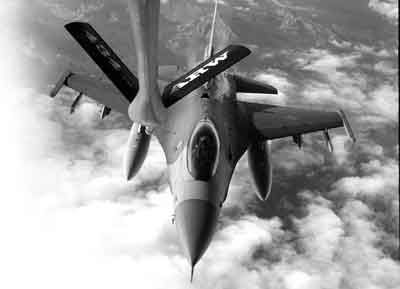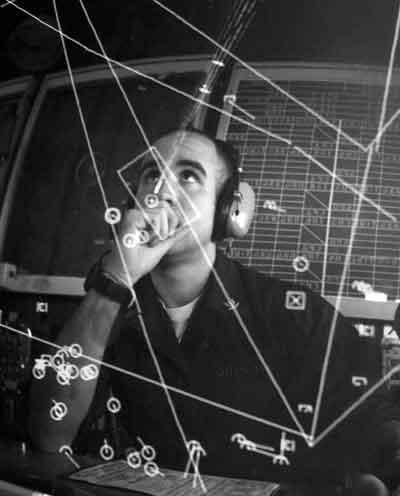The Defence Capabilities Initiative (DCI) was originally intended as a measure to address the growing technology gap between the United States and its NATO allies. But since its launch in April 1999, the initiative has been broadened to include doctrinal and organisational elements of future military operations, such as the need to be able to deploy mobile and sustainable forces. In taking on this broader mandate, DCI goes beyond longstanding initiatives like the NATO Standardisation Programme and attempts to respond to the US-led Revolution in Military Affairs. Its success is pivotal for strengthening the European pillar of NATO and maintaining the military and political viability of the alliance.
The Revolution in Military Affairs (RMA) can be described as a major change in the nature of war-fare brought about by the innovative application of new technologies which, combined with dramatic changes in military doctrine and operational and organisational concepts, fundamentally alter the character and conduct of military operations. (1) New military technologies associated with the RMA include precision-guided munitions for precision force, stealth for greater power projection, advanced intelligence, surveillance and reconnaissance systems for enhanced battle-space awareness, and advanced command, control, communications and computing systems for increased battle-space control.

A US F-16 fighter bomber approaches a KC 135 tanker to refuel over Albania, during the Kosovo air campaign
23 July 1999. (Belga photo - 9Kb)
Key doctrinal developments focus on interoperability among services and multinational operations, coastal warfare, disengaged combat using precision force, and smaller, more rapidly mobile and flexible, yet still highly lethal, ground forces. Organisational changes centre on a shift from mass armies to smaller, more highly educated and capital-intensive professional armed forces, whose units are commanded by a more decentralised decision-making structure and can be tailored to the specific task at hand.
The RMA is being driven by a number of factors. These include:
- advances in military technologies, notably in computers, telecommunications, sensors, and precision-guided munitions, which in turn are being driven by the information revolution in the civilian sector;
- reductions in defence budgets that have brought about dramatic reductions in the size of military forces in Western countries since the end of the Cold War;
- the resulting need to emphasise qualitative improvements to compensate for reduced numbers of forces;
- a strategic environment that, in contrast to that of the Cold War, is characterised by unpredictable threats and risks that are likely to allow little, if any, time for mobilisation;
- the resulting need for forces that can respond rapidly to a wide spectrum of regional conflict scenarios;
- and a lower tolerance among Western nations for casualties.
The widening technology and capability gap
Operation Allied Force in and around Kosovo in the spring of 1999 demonstrated that European members of NATO have limited capabilities in several RMA-related areas. More than 70 per cent of the fire-power deployed was American. Only a handful of European allies had laser-guided bombs, and only Britain was able to contribute cruise missiles (2) . Barely 10 per cent of European aircraft are capable of precision bombing (3) and of the European members of NATO, only France was able to make a significant contribution to high-level bombing raids at night. (4) Only the United States could contribute strategic bombers and stealth aircraft for enhanced power projection. European allies also critically lacked reconnaissance and surveillance aircraft.
Europe an members of NATO are taking measures to respond to the RMA. They plan to increase their precision force, stealth and battle-space awareness and control capabilities over the next few years, and are adopting force mobility and power projection as the guiding doctrines for transforming their militaries. NATO itself has moved to adapt its joint military command structure to the post-Cold War security environment and has developed the Combined Joint Task Force concept to increase its ability to respond to todays security risks and threats.

A French Army "Puma" helicopter is rolled off a Russian-made Petrovac airport in Skopje, the former Yugoslav Republic of Macedonia* "Antonov" transport plane at 8 December 1998. (Belga photo - 8Kb)
But outside these measures, Europes militaries are not incorporating advanced technologies into their military systems quickly enough to stem a growing technology gap between the US military and its European counterparts. The gap has been apparent since at least the Gulf War but was dramatically highlighted by the 1999 NATO operation in and around Kosovo. Americas superiority in information systems meant that it had difficulty communicating with its allies. The allies also experienced problems in joint deployment, target identification and weapons compatibility. (5) Nor are European allies moving rapidly enough to restructure their militaries. Although the European Unions militaries comprise almost two million people, as compared to 1.45 million in the United States, it could draw up only half the number of properly equipped and trained professional soldiers required for Kosovo.
The widening gap is partly due to substantially reduced defence budgets in western European countries. Since the end of the Cold War, NATO members have cut defence spending by about 25 per cent in real terms. As a result, the European allies account for less than one-third of NATOs total equipment spending. More importantly, it is the manner in which remaining funds are put to use that explains the growing gap. The United States spends roughly two and a half times as much on research and development as all other members of NATO combined, and has more aggressively pursued revolutionary innovations in software, communications, sensor and logistics technology to compensate for manpower and equipment reductions. The upshot is that while European countries spend about two-thirds of what the United States spends on defense [they] dont have anything like two-thirds of the capabilities. (6)
Future viability of the alliance at stake
The technology and capability gap between the United States and its European allies has a number of implications. The most immediate is that European militaries will soon be unable to operate alongside the Americans because of their technological backwardness. Problems of compatibility have been an issue for the alliance since its inception. The difference today is that US advancements in communications, data processing and precision-guided weapons are in the process of completely eclipsing those of its allies and casting into question their ability to function together (7) .
The gap could also breed new tension within the alliance, undermining its cohesiveness. Tension could arise if European armies by default find themselves increasingly responsible for the dangerous, manpower-intensive tasks that can lead to significant casualties, while the United States provides the high-tech logistics, lift, intelligence and airpower. The gap could also raise burden-sharing issues and aggravate mutual resentments by increasing Europes security dependence on the United States, at a time when Europeans are expected to do more for their own security.
Most significantly, the technology and capability gap could eventually marginalise the political and military importance of the North Atlantic Alliance. While the divergence in capabilities has not prevented successful operations in Bosnia and Herzegovina or Kosovo, many experts argue that European militaries could provide little help in a more demanding engagement. Ironically, the more severe the threat to US and European shared interests, the less likely that a true US-European coalition will respond. Continued political and military support for the alliance on the part of the United States will ultimately depend on the ability of its European allies to make a valid contribution to combined operations. Far from replacing NATO, therefore, boosting European military capabilities is central to the future viability of the alliance.
Recognising this, in the wake of the Kosovo crisis, European leaders revitalised their commitment to the development of an effective European Defence and Security Identity (ESDI). In June 1999, they nominated the then NATO Secretary General, Javier Solana, to lead this drive from the newly created position of High Representative for the European Unions Common Foreign and Security Policy. They also decided to merge the Western European Union (WEU) with the European Union (EU) by the end of 2000, and to transform the Eurocorps into a rapid reaction force. At the Helsinki summit in December 1999, EU leaders agreed to create a rapid reaction corps of 50,000 to 60,000 troops under direct EU control by 2003.
Despite these steps, most analysts and policy makers agree that a stronger ESDI will depend less on institutional changes and more on modernising forces to meet the demands of the new international security environment. ESDI is a hollow concept unless it is coupled with increased capabilities. In part, this means some EU members spending more on defence. But more importantly it means most members spending their defence budgets on different things.
Closing the gap through DCI
It is here that the Defence Capabilities Initiative (DCI) one of the most significant outcomes of NATOs summit in Washington in April 1999 has a key role to play. The objective of this initiative is to ensure that the alliance can effectively carry out operations across the entire spectrum of its present and possible future missions from responding to humanitarian disasters, to carrying out peace-enforcement operations, to conducting high-intensity warfare in defence of alliance territory.
The DCI is specifically designed to address those areas where the alliance needs to develop its military capabilities, so that it can effectively respond to the sorts of challenges it is likely to face in the coming years and decades. The initiative focuses on improving interoperability among the forces of member states and seeks to increase NATO military capabilities in the following areas : deployability and mobility of allied forces, their sustainability and logistics, their survivability, their effective engagement capability, and their command and control and information systems.
These areas of focus echo the key technological, doctrinal and organisational elements of the Revolution in Military Affairs:
- Deployability is best enhanced by investing in air and sea lift and by reorganising forces into smaller, more rapidly mobile units that are equipped with lighter, yet highly lethal (often precision-guided) weapons.
- Sustainability will be dependent in part on applying advanced technologies to logistics efforts.
- Effective engagement requires a wide variety of advanced weapons systems associated with the RMA, from precision-guided munitions and all-weather surveillance and reconnaissance systems to attack helicopters and stealth aircraft. It also necessitates that these systems be interoperable among services and militaries to facilitate the joint and combined operations that are fundamental to the RMA.
- Survivability involves efforts to protect forces against the possible use of weapons of mass destruction.
- Finally, advanced, interoperable, and deployable command and control and information systems are key elements of the RMA and are essential for enhancing military capability.
A pivotal initiative for the alliance

A US sailor is reflected in a radar screen in the communications and control centre on board the USS Philippine Sea, during the Kosovo campaign 27 March 1999. (Reuterstrack photo - 15Kb)
Deployability, sustainability, effective engagement, survivability and command and control are therefore not only the primary areas of focus for the DCI, but also capture the key elements of the RMA. Indeed, DCI can be viewed as the blueprint for responding to the RMA. As such, it is central not only to improving the military capabilities of European forces and strengthening the European pillar of NATO, but also to ensuring the continued military and political viability of the North Atlantic Alliance.
Whether or not the Defence Capabilities Initiative will succeed is as yet an open question. But one thing is certain: if it does not ultimately translate into concrete improvements in the European component of NATOs force posture, the long-term viability of the transatlantic link will come under growing pressure from a US Congress increasingly sceptical about Europes commitment to keeping pace with the Revolution in Military Affairs.

